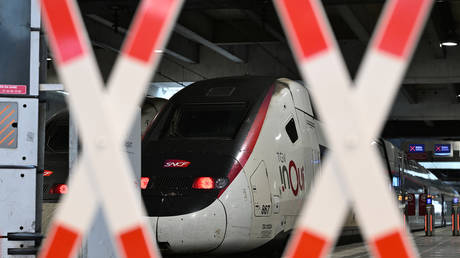Professor John Haddock and graduate student Oscar Moncada examine a slab of concrete pavement they tested to handle heavy truckloads with wireless power-transfer technology installed below the surface.
Photo provided by Consensus Digital Media
Indiana researchers are testing out a highway that can wirelessly charge electric vehicles. They say their technology is so powerful that it can even charge an electric semi-truck. Transmitter coils installed under the pavement transmit energy to receiver coils on the EVs.
One of the biggest downsides of owning an electric vehicle is having to stop and charge it, but a group of researchers out of Indiana wants to change that.
Their solution? Highways that can wirelessly charge your EV while you drive, even at high speeds.
Engineers at Purdue University and the Indiana Department of Transportation announced last week that they’re developing a section of highway that can charge electric vehicles, and even electric semi-trucks, while they drive at 65 miles per hour.
Purdue University engineers John Haddock (left), Nadia Gkritza, Dionysios Aliprantis and Steve Pekarek are testing the technology.
Purdue University photo/Vincent Walter
Construction begins Monday on the quarter-mile test section of the US Highway 231/US Highway 52 in West Lafayette, Indiana, the university said in a press release.
The patent-pending technology works like this: engineers install transmitter coils beneath the highway pavement, and those coils send energy through a magnetic field to receiver coils that also must be installed on the bottoms of the electric vehicles.
Because a successful wireless charge requires vehicles to have a receiver coil, manufacturers would have to build that capability into their products, or EV owners would need to retrofit their vehicles with the device.
Other wireless EV charging systems like this one do exist, but Purdue’s is unique because it has enough power to charge semi-trucks, according to the researchers.
Though other roads have been electrified (like one in Detroit), this project marks the first time it’s being tested both on a highway and on electric semi-trucks.
The pilot program will begin testing out the technology in May 2025, after the installation is finished. During the testing phase, the researchers will study what happens if a vehicle doesn’t drive right over the coils, how inclement weather will affect the charging process, and if cracks in the pavement will cause a problem, Fast Company reported.
The team said it hopes to electrify a section of an Indiana interstate within the next four or five years.





+ There are no comments
Add yours